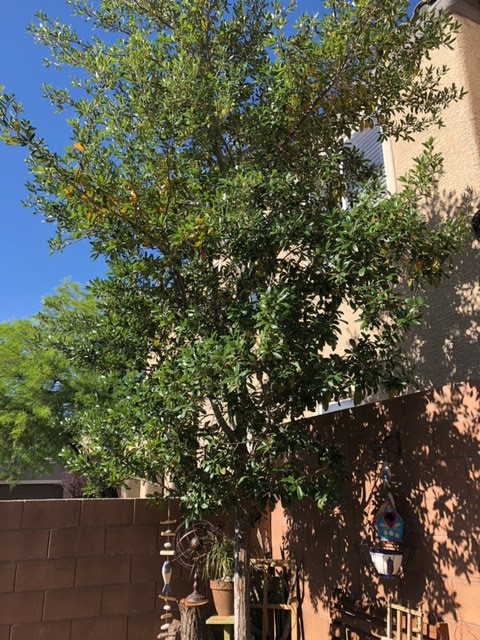Q. We have a 10-year-old live oak tree (I think it’s live
oak) that was established when we moved into our home last year. I noticed that
it sheds leaves seemingly all year long which didn’t seem right to me. It is
happening very fast now and I’m really worried.
 |
| This evergreen oak has been dropping its leaves. Look for aphids in the cool spring. |
A. Yes, judging from your pictures it is southern live
oak and probably Texas southern live oak; maybe ‘Heritage’.
Let’s
get something out of the way quickly. That’s irrigation. I know it doesn’t seem
logical but irrigation can, and notice I said can, be the source of a lot of
problems in the desert. Live oak from Texas is not a “desert tree” but for a
large tree (40 to 50 feet tall) it can use much less water than some other
trees around the same height, such as mulberry. It will survive in a lawn and
it will survive in rock landscapes if given enough water.
 |
| Water larger plants like large trees deeper than smaller trees and shrubs. To wet the soil deeper and NOT adjust the number of minutes, add more emitters. |
Whereas
mulberry might require between five and 6 feet of water under its canopy each
year, Texas Live Oak can still look good with 3 to 4 feet of water applied to
the same area. Watering too often, not watering often enough, giving the tree
not enough water all at once, and not distributing the water over a wide enough
area under the tree can cause leaf drop. When water is applied to Texas live oak,
it should be applied to at least half the area under the canopy and to a depth
of 2 ½ feet. It is watered again when the upper six to 12 inches starts drying.
The
usual spring problem on live oak are aphids. If heavily infested the leaves will fall or drop. Aphids becomes a lesser problem
when it gets hot. Trees with leaves infested with aphids are easy to spot
because aphids leave a sticky residue on the leaf surface and can cause leaf
drop when they feed on plant sap. The sticky residue glistens in the sunlight. An
application to the soil in the spring of a systemic insecticide like
imidacloprid or a rose systemic insecticide will take care of the aphids and
stop the excessive leaf drop.